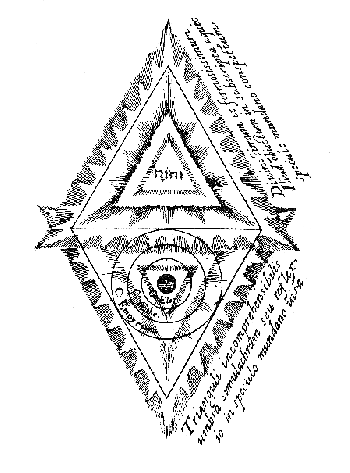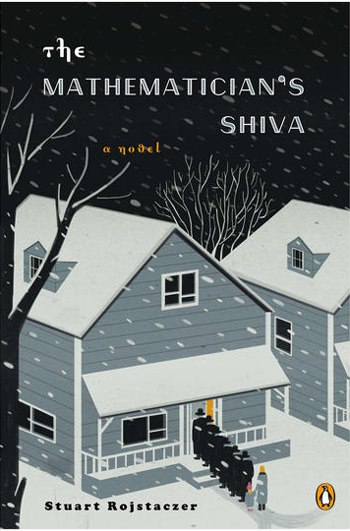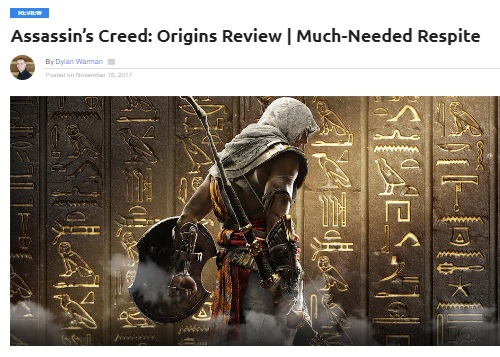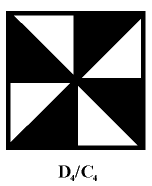If you liked this one, see more in Blanche Knott's Truly Tasteless Jokes.
Friday, September 29, 2023
Assassin’s Creed Song:
♪ “I left my Booth… in San Francisco” ♪
♪ “I left my Booth… in San Francisco” ♪
Friday, July 28, 2017
Creeds
From a novel featuring the Navier-Stokes problem —
A search for "Creed" in this journal yields
a different sort of Shiva —

For further reviews, click on the Penguin below.
Sunday, October 11, 2020
The Weisheit Weekend
Sunday, July 5, 2020
It’s Still the Same Old Story …
“He recounted the story of Adam and Eve, who were banished
from paradise because of their curiosity. Their inability to resist
the temptation of the forbidden fruit. Which itself was a metaphorical
stand-in for knowledge and power. He urged us to find the restraint
needed to resist the temptation of the cube—the biblical apple
in modern garb. He urged us to remain in Eden until we were able
to work out the knowledge the apple offered, all by ourselves.”
— Richards, Douglas E.. The Enigma Cube (Alien Artifact Book 1)
(pp. 160-161). Paragon Press, 2020. Kindle Edition.
The biblical apple also appears in the game, and film, Assassin's Creed .
Related material —
See the cartoon version of Alfred North Whitehead in the previous post,
and some Whitehead-related projective geometry —
Thursday, October 24, 2019
Halloween Logos for MIT
From the end credits for a 2016 TV mini-series
based on the Stephen King novel 11/22/63 —


This post was suggested by the Oct. 22 post
Logos, by the Oct. 11 post Dick Date, and by
the Oct. 11 death of an MIT robotics professor.
Related tasteless humor —
A headline from the print version of the recent
technology issue of The New Yorker :
Tuesday, October 15, 2019
A White Stone for Bloom
Wednesday, September 25, 2019
Language Game
Previous posts now tagged Pyramid Game suggest …
A possible New Yorker caption: " e . . . (ab) . . . (cd) . "
Caption Origins —
Playing with shapes related to some 1906 work of Whitehead:
Friday, January 18, 2019
Location, Location, Location
Thursday, November 1, 2018
Formation, Transformation . . . . Solution, Dissolution
Thursday, August 2, 2018
National Comedy
Sunday, November 19, 2017
Review
"New to the series are the Trials of the Gods events
that pit players against Ancient Egyptian gods."
— Review of the new game Assassin's Creed: Origins
"How much story do you want?" — George Balanchine
Sunday, March 12, 2017
Dialogue
A Yale Law professor on Saturday, March 4, 2017 —
"Donald Trump is Shiva the Destroyer."
Related dialogue from the new film "Assassin's Creed"—
Marion Cotillard— You've thought of everything.
Jeremy Irons— Not quite. My speech. It could do
with one of your elegant openings.
Marion Cotillard— "Now I've become death,
the destroyer of worlds."
Jeremy Irons—Not sure that I could make that work.
Monday, December 22, 2014
Sigla
Or: Chessboard continued
"Time is irrelevant in these matters.
Joyce and the monastic brethren who
painted their manuscript ornaments
a thousand years ago were working on
the same project. There was a pattern
to be abstracted…."
— Adolf Holl, The Left Hand of God
Saturday, January 4, 2014
For Adam Smith
Above: Langella at Cannes with fellow actors from
Wall Street: Money Never Sleeps .
Thursday, May 2, 2013
Character
For the Church of St. Frank:

The phrase “Church of St. Frank” was coined in 1995 by
a Harvard professor sneering at literary critic Frank Kermode.
(See a related Log24 note from 1995.)
Now that Frank Kermode is gone, perhaps the phrase suits Frank Langella.

Above: Langella at Cannes with fellow actors from
Wall Street: Money Never Sleeps . He also starred in
the film version of Starting Out in the Evening (quoted above).
Some related reflections on character:
Diamond Speech (this journal, July 3, 2012) and
Robert Diamond’s Next Life in today’s online New York Times .
Saturday, April 21, 2012
Split
"So the sundering we sense between nature and culture
lies not like a canyon outside us, but splits our being
at its most intimate depths the way mind breaks off from body.
It is still another version of that bitter bifurcation
long ago decreed— our expulsion from Eden…."
— William H. Gass in Finding a Form ,
Cornell U. Press paperback, 1997, page 138
See also…
For another bitter bifurcation, see La Despedida .
Wednesday, July 20, 2011
Church of St. Frank*
"A New York Jew imitates D. H. Lawrence at his peril."

See also The Ninth Gate and Spider Women.
* For the title, do a search in this journal.
Tuesday, April 12, 2011
History: The Nightmare Continues
From the AP "Today in History" column for April 12—
On this date:
In 1606, England's King James I decreed the design of the original Union Flag, which combined the flags of England and Scotland.

The 1606 Union Flag incorporated the crosses of St. George (England) and St. Andrew (Scotland).
This suggests some notes on graphic design.
See The Double Cross.
Thursday, February 3, 2011
Wednesday, April 23, 2008
Wednesday April 23, 2008
Upscale Realism
or, "Have some more
wine and cheese, Barack."
Allyn Jackson on Rebecca Goldstein
in the April 2006 AMS Notices (pdf)
|
"Rebecca Goldstein’s 1983 novel The Mind-Body Problem has been widely admired among mathematicians for its authentic depiction of academic life, as well as for its exploration of how philosophical issues impinge on everyday life. Her new book, Incompleteness: The Proof and Paradox of Kurt Gödel, is a volume in the 'Great Discoveries' series published by W. W. Norton….
In March 2005 the Mathematical Sciences Research Institute (MSRI) in Berkeley held a public event in which its special projects director, Robert Osserman, talked with Goldstein about her work. The conversation, which took place before an audience of about fifty people at the Commonwealth Club in San Francisco, was taped…. A member of the audience posed a question that has been on the minds of many of Goldstein’s readers: Is The Mind-Body Problem based on her own life? She did indeed study philosophy at Princeton, finishing her Ph.D. in 1976 with a thesis titled 'Reduction, Realism, and the Mind.' She said that while there are correlations between her life and the novel, the book is not autobiographical…. She… talked about the relationship between Gödel and his colleague at the Institute for Advanced Study, Albert Einstein. The two were very different: As Goldstein put it, 'Einstein was a real mensch, and Gödel was very neurotic.' Nevertheless, a friendship sprang up between the two. It was based in part, Goldstein speculated, on their both being exiles– exiles from Europe and intellectual exiles. Gödel's work was sometimes taken to mean that even mathematical truth is uncertain, she noted, while Einstein's theories of relativity were seen as implying the sweeping view that 'everything is relative.' These misinterpretations irked both men, said Goldstein. 'Einstein and Gödel were realists and did not like it when their work was put to the opposite purpose.'" |
Related material:
From Log24 on
March 22 (Tuesday of
Passion Week), 2005:
|
"'What is this Stone?' Chloe asked…. 'It is told that, when the Merciful One made the worlds, first of all He created that Stone and gave it to the Divine One whom the Jews call Shekinah, and as she gazed upon it the universes arose and had being.'"
— Many Dimensions,
For more on this theme
appropriate to Passion Week — Jews playing God — see
Rebecca Goldstein
Wine and cheese |
From
UPSCALE,
a website of the
physics department at
the University of Toronto:
|
Mirror Symmetry

"The image [above]
The caption of the
'That most divine and beautiful
The caption of the
'A shadow, likeness, or * Sic. The original is incomprehensibilis, a technical theological term. See Dorothy Sayers on the Athanasian Creed and John 1:5. |
For further iconology of the
above equilateral triangles,
see Star Wars (May 25, 2003),
Mani Padme (March 10, 2008),
Rite of Sping (March 14, 2008),
and
Art History: The Pope of Hope
(In honor of John Paul II
three days after his death
in April 2005).
Happy Shakespeare's Birthday.
Tuesday, June 5, 2007
Tuesday June 5, 2007
A Whirligig Tour

Symbol from a
website on
“Presbyterian
Creedal Standards”
The above symbol
appeared here
on 11/8/02.
Related material:
1. The remarks of
Bradley Whitford
at Princeton’s
Class Day yesterday:

2. An illustration from
Log 24 on 11/10/06:
|
|
|
|
Paul Robeson in |
3. The Whirligig of Time
(1/5/03):

4. Natalie Angier, priestess of Scientism
(5/26/07), and her new book
The Canon: A Whirligig Tour of
the Beautiful Basics of Science
(available as a special from
Amazon.com):
| Better Together Buy this book with God Is Not Great: How Religion Poisons Everything by Christopher Hitchens today!
|
Thursday, November 16, 2006
Thursday November 16, 2006
Dante, Inf., canto X.
Words
for
G. Robert Crowningshield,
a developer of the
International Diamond
Grading System™
According to a
press release,
Crowningshield
died on
November 8.
See Grave Matters,
an entry of that date,
and its links to
Geometry’s Tombstones,
Birth, Death, and Symmetry,
and
Religious Symbolism
at Princeton.
| Dante, Inferno, Canto X, 37-39:
E l’animose man del duca e pronte And the bold and ready hands “Make your words count,” |
Perhaps Crowningshield’s
Leader will be…

Niemoller is noted for his role in
the movement that led to the
Barmen Declaration, discussed in
Presbyterian Creedal Standards—
linked to in the above-cited
Religious Symbolism
at Princeton
(…that lay in the house
that Jack built).

Wednesday, March 10, 2004
Wednesday March 10, 2004
Split

The first idea was not our own. Adam
in Eden was the father of Descartes.— Wallace Stevens,
Notes Toward a Supreme FictionA very interesting web site at
Middle Tennessee State University
relates the Stevens quote
to two others:“The sundering we sense, between nature and culture, lies not like a canyon outside us but splits our being at its most intimate depths the way mind breaks off from body. It is still another version of that bitter bifurcation long ago decreed: our expulsion from Eden. It differs from the apparently similar Cartesian crease across things in the fact that the two halves of us once were one; that we did not always stand askance like molasses and madness–logically at odds–but grew apart over the years like those husbands and wives who draw themselves into different corners of contemplation.”
— William Gass,
“The Polemical Philosopher”“The experiment [to make rationality primary] reached the reductio ad absurdum following the attempt by Descartes to solve problems of human knowledge by giving ontological status to the dichotomy of thinking substance and extended substance, that is subject and object. Not only were God and man, sacred and secular, being and becoming, play and seriousness severed, but now also the subject which wished to unite these fragmented dichotomies was itself severed from that which it would attempt to reconcile.”
— David Miller, God and Games
“Which is it then? For Gass, the Cartesian schism is a post- lapsarian divorce-in progress, only apparently similar to the expulsion from paradise. For Stevens the fault is primordial and Descartes only its latter-day avatar. For Miller, Descartes is the historical culprit, the patriarch of the split.”
Friday, November 8, 2002
Friday November 8, 2002
Religious Symbolism
at Princeton
In memory of Steve McQueen (“The Great Escape” and “The Thomas Crown Affair”… see preceding entry) and of Rudolf Augstein (publisher of Der Spiegel), both of whom died on November 7 (in 1980 and 2002, respectively), in memory of the following residents of
The Princeton Cemetery
of the Nassau Presbyterian Church
Established 1757
|
SYLVIA BEACH (1887-1962), whose father was pastor of the First Presbyterian Church, founded Shakespeare & Company, a Paris bookshop which became a focus for struggling expatriate writers. In 1922 she published James Joyce’s Ulysses when others considered it obscene, and she defiantly closed her shop in 1941 in protest against the Nazi occupation. KURT GÖDEL (1906-1978), a world-class mathematician famous for a vast array of major contributions to logic, was a longtime professor at the Institute for Advanced Study, founded in 1930. He was a corecipient of the Einstein Award in 1951. JOHN (HENRY) O’HARA (1905-1970) was a voluminous and much-honored writer. His novels, Appointment in Samarra (1934) and Ten North Frederick (1955), and his collection of short stories, Pal Joey (1940), are among his best-known works. |
and of the long and powerful association of Princeton University with the Presbyterian Church, as well as the theological perspective of Carl Jung in Man and His Symbols, I offer the following “windmill,” taken from the Presbyterian Creedal Standards website, as a memorial:

The background music Les Moulins de Mon Coeur, selected yesterday morning in memory of Steve McQueen, continues to be appropriate.
“A is for Anna.”
— James Joyce






























